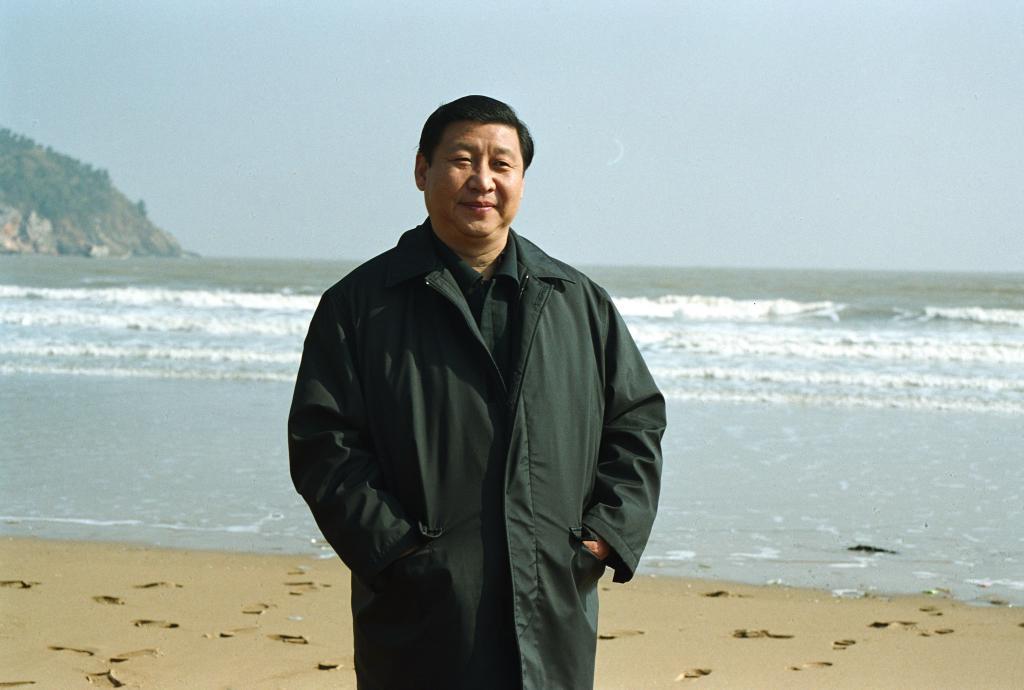Young women dressed in long swimsuits that resemble diving suits walk on the damp sand, covered from head to toe. In addition to gloves, wide-brimmed hats, and huge sunglasses, some completely cover their faces with the popular facekinis, brightly colored masks that protect the skin from tanning. The deep-rooted fear of the sun, along with the cultural tradition of having perfect white skin, is still prevalent on Chinese beaches.
Beidaihe, less than 300 kilometers northeast of Beijing, facing the Bohai Sea, is a coastal resort where, like in many others in China, practically only women wearing facekinis and a few brave souls are seen during sunny hours. At dusk, however, the beaches fill up with families, groups of students, and ladies with their bulky inflatable rubber floats.
On the beachfront, some neighborhoods seem to have imitated the aesthetics of a rundown and tacky Benidorm. But do not be fooled by the appearance that the average visitor encounters, because in this place lies a luxurious resort with huge villas where some important figures of the political scene move every summer in the second world power.
Every August, since the times of Mao Zedong, high-ranking officials of the ruling Communist Party (CCP) gather in Beidaihe to take a dip and, in passing, meet to discuss the policies for the upcoming year in informal meetings that do not appear on any agenda or are announced to the public, but have been a key event in Beijing's political calendar for decades.
Mao Zedong, former president of the Chinese Communist Party (CCP), in Beidaihe, in an archival image.GETTY
It was in 1953 when Mao, the founder of communist China, decided to establish the CCP's "summer office" in Beidaihe so that leaders could retreat to the eastern beaches, escaping the stifling heat of the capital. Many historians have recounted that Mao, in addition to his evening baths, made significant decisions in this place such as launching the Great Leap Forward, the rushed campaign that aimed to transform China into an industrial power and ended up being a disaster, leading to one of the largest famines in history.
The summer residence of Chinese leaders is located within the industrial city of Qinhuangdao, home to around two million people and boasting the largest coal transport port in the country. A gray place that has maintained its appeal as a vacation destination for many urbanites from Beijing and its neighboring Hebei province, thanks to the Soviet-style charm that many believe Beidaihe has, occupied and developed by Russian millionaires in the early 20th century. During the Mao era, the CCP expropriated the mansions of the Russians and began lending them to high officials.
"Shortly after the Communist Party took power in 1949, it began to consider Beidaihe as the ideal place for war veterans' retirement. That year, a rehabilitation committee was sent to occupy the houses where today the facilities for state leaders are located. Between 1953 and 1965, almost all important summer meetings were held in Beidaihe, and many significant decisions were made from its villas. These included the launch of the Anti-Rightist Campaign in 1957; the bombing of Kinmen, an island off the coast of Fujian controlled by the Kuomintang, in 1958; and the launch of the Great Leap Forward," reads a note published by the state newspaper China Daily.
In 2000, in one of the mansions, former Chinese leader Jiang Zemin was interviewed by a CBS journalist a few days before his first trip to the United States. Political retreats in Beidaihe were suspended for a time during the tumultuous Cultural Revolution (1966-1976) and during the decade of the former President Hu Jintao's government. But in 2013, with Xi Jinping at the helm, Chinese politicians returned to parade on these beaches.
A few days ago, the fifth strongman of the CCP and chief of the president's cabinet, Cai Qi, appeared at the resort, indicating that the Chinese leaders had begun their annual summer vacations, which usually last from 10 to 14 days during which they barely appear in the public eye. Cai welcomed over thirty prominent academics and scientists in Beidaihe, praising them as "very valuable assets for the party and the country."
There has been no image or official confirmation that the current supreme leader has been a regular visitor to Mao's Beach in recent summers, of which older locals retain some memories. Like the fisherman who, while in his small boat pulling out the crabs he had caught from the net, saw Mao approaching him on a hovercraft to buy all the crustaceans.
Luxury villas hidden in video-monitored fortresses and with tight security controls extend along the coast, but there are also picturesque high-end hotels, cheap hostels, and old tourist apartment blocks. During the day, the wide avenues that divide the area are practically empty, but at night they come to life with vibrant night food markets.
Residents and visitors learn that an important politician is around when traffic suddenly closes on the main streets and a convoy of cars with tinted windows passes by. Many years ago, state media reported that, to protect the leaders during their baths, the People's Liberation Army had formed a special swimming squad that trained by swimming 10 kilometers daily.
